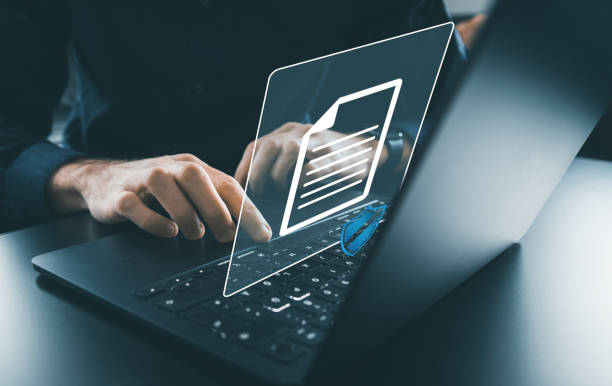An Introduction to On-Page SEO and Its Importance for Online Success
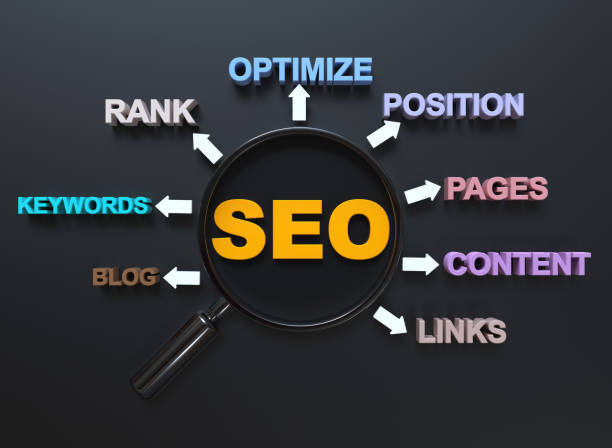
On-page SEO (#on-page_SEO) is one of the main pillars of any search engine optimization strategy, referring to a set of actions taken within your website to improve its ranking in search engine results pages.
This process, unlike off-page SEO, is completely under your control and involves optimizing aspects such as content, HTML code, and site structure.
The main goal of on-page SEO is to create content that is both valuable to users and understandable and indexable by search engine bots.
In this section, we provide a comprehensive explanation of why #on-page_optimization is essential for any website.
Without strong on-page SEO, even with the best external link-building, your website will not be able to achieve top rankings.
On-page SEO helps search engines understand the main topic of your pages and recognize their relevance to user queries.
This process includes everything from choosing appropriate keywords to structuring content and technical optimization.
By correctly implementing on-page SEO techniques, not only will your site’s visibility increase, but user experience will improve, and conversion rates will also grow.
Is your online sales not as expected? With Rasawweb, permanently solve the problem of low sales and poor user experience!
✅ Increase visitor-to-customer conversion rate
✅ Create an enjoyable user experience and increase customer trust
⚡ Contact us now for a free consultation!
Effective Keyword Research, the Cornerstone of On-Page SEO
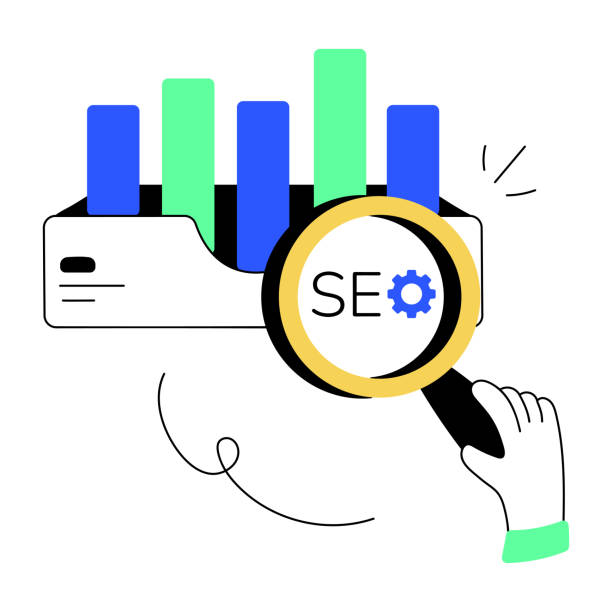
Keyword research is the first and most crucial step in any on-page SEO campaign.
This process helps you precisely understand what phrases users are searching for in search engines and what their needs are.
By accurately identifying keywords, you can produce content that directly addresses these needs.
In this section, we provide a comprehensive and specialized guide to conducting keyword research.
Use keyword research tools like Google Keyword Planner, Ahrefs, and Semrush to identify search volume, competition level, and related keywords.
Focusing on long-tail keywords is very important, as these keywords usually indicate user intent more accurately and have higher conversion rates.
For example, instead of “SEO,” use “best on-page SEO methods for WordPress sites.”
Also, pay attention to user search intent (Search Intent); is the user looking for information (Informational), intending to buy (Commercial), or looking to navigate to a specific site (Navigational)? Understanding these intents helps you produce relevant and valuable content that significantly increases your chances of ranking in on-page SEO.
Optimizing for the right keywords is the foundation of your on-page SEO success.
Optimizing Titles and Meta Descriptions to Increase Clicks
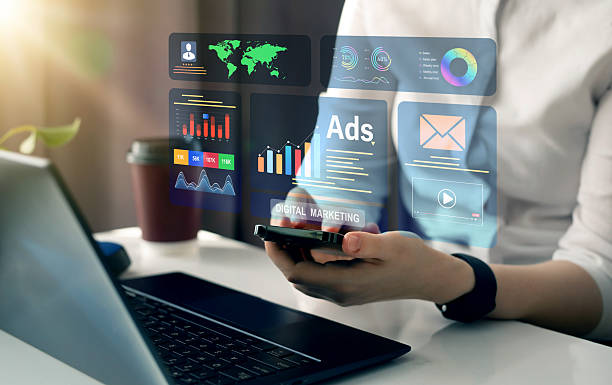
The page title (Title Tag) and meta description (Meta Description) are the first things users see in search results and play a vital role in their decision to click on your link.
Optimizing these two elements is very important for on-page SEO, as it helps search engines better understand the topic of your page while encouraging users to visit your site.
This section provides a specialized guide to writing attractive and effective titles and meta descriptions.
For the page title, place the main keyword at the beginning and write it to be attractive and informative (around 50-60 characters).
The meta description should also be an engaging summary of the page’s content, containing relevant keywords and a brief, effective call to action (around 150-160 characters).
Although meta descriptions do not directly affect ranking, they can significantly increase the click-through rate (CTR), which is itself an important factor in ranking algorithms.
Ensure that your titles and meta descriptions are unique and specific to each page to prevent duplicate content.
Using Schema Markup can also improve the appearance of your search results and display more information, which also aids on-page SEO.
| Element | Bad Example | Good Example (with On-Page SEO Keyword) |
|---|---|---|
| Page Title (Title Tag) | Website SEO Training | Comprehensive On-Page SEO Training 2024 – Step-by-Step Guide |
| Meta Description | Learn how to SEO your site. | Improve your site’s ranking in Google with this specialized on-page SEO guide. Learn practical and useful tips. |
Content Structure and the Role of Headings in Readability and On-Page SEO

Content structure not only affects readability and user experience but also plays a significant role in on-page SEO.
Correct use of headings (H1, H2, H3, etc.) helps search engines understand the information hierarchy on your page and identify primary and secondary keywords.
This section is educational and explanatory, addressing the importance of content organization.
Each page should have only one H1 tag, which is usually the main title of the content and includes the primary keyword.
H2 tags are used for main sections, and H3 tags for their subsections.
This logical structure makes reading easier for users and allows them to quickly find the information they are looking for.
Furthermore, graduating content by using lists (bold, italic, bulleted or numbered) and short paragraphs also enhances readability.
Your content should be deep and comprehensive, but at the same time, prevent monotony with proper segmentation.
Search engines prefer pages that have a clear structure and offer high readability.
By creating a logical structure and intelligently using headings, you can not only improve your on-page SEO but also enhance the user experience, leading to a reduced bounce rate and increased time on site.
Is your e-commerce site ready to attract maximum customers and increase sales? Rasawweb transforms your online business with modern and efficient e-commerce website design.
✅ Increased speed and improved SEO
✅ Excellent user experience on mobile and desktop⚡ Get a free e-commerce website design consultation from Rasawweb!
Optimizing Images and Multimedia Files for On-Page SEO
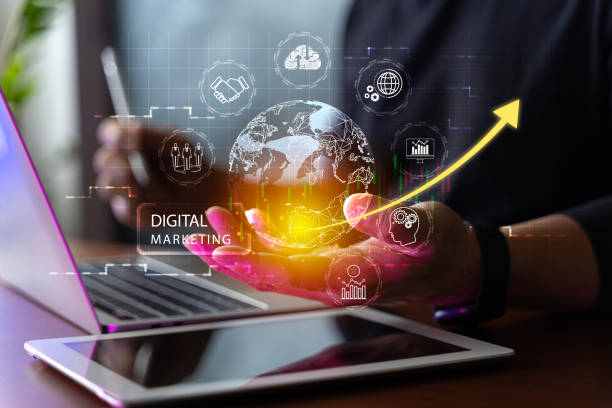
Images and multimedia files are an integral part of modern websites and contribute to content appeal.
However, if not optimized correctly, they can slow down site loading speed and harm on-page SEO.
This specialized guide shows you how to optimize images to improve on-page SEO performance and user experience.
The first step is to compress images without losing quality.
Tools like TinyPNG or ShortPixel can assist you with this.
Smaller file sizes mean faster loading speeds, which is a crucial ranking factor.
Second, it is essential to use descriptive filenames containing relevant keywords for images (e.g., “on-page-seo-strategy.jpg” instead of “IMG001.jpg”).
Third, always complete the Alt Text (alternative text) attribute for each image.
Alt Text is a brief description of the image content that helps search engines understand the image and is useful for visually impaired users.
Additionally, this text can be effective for ranking in Google Image Search.
Fourth, use Lazy Loading so that images only load when the user scrolls to the relevant section.
This significantly increases the initial page loading speed.
Fifth, optimize image formats; using modern formats like WebP can reduce file size without compromising quality.
Thorough image optimization, in addition to improving on-page SEO, also helps increase your site’s visual appeal.
The Importance of Internal Linking and Improving User Experience
![]()
Internal linking, which means linking different pages within a website to each other, is one of the most powerful tools in on-page SEO.
This strategy not only helps search engines better understand your site’s structure and index your pages but also distributes Link Equity throughout your site.
This section provides a deep analysis and comprehensive guide on the best practices for internal linking.
Internal links help users navigate your site more easily and discover related content, which leads to increased time on site and reduced bounce rate.
For maximum benefit from internal linking, use descriptive anchor texts (Anchor Text) containing relevant keywords.
Instead of “click here,” use “comprehensive on-page SEO guide.”
Ensure that links point to relevant and high-value pages.
Your internal linking structure should resemble a spider web, supporting important and main pages with more links from other pages.
Additionally, creating an XML Sitemap (XML Sitemap) and submitting it to Google via Google Search Console helps search engines discover all your pages and understand their structure.
A strong internal linking strategy directly helps improve the ranking of your important pages in search results and optimizes user experience.
The Role of Quality Content in Modern On-Page SEO

Content is king, and this principle is more important than ever in today’s world of on-page SEO.
Producing high-quality, valuable, and unique content not only attracts users but also encourages search engines to rank your pages higher.
This specialized and analytical section teaches you how to produce content that is both engaging for your audience and optimized for SEO.
Quality content means providing complete and comprehensive answers to user questions.
Content depth, comprehensive topic coverage, information accuracy, and content freshness (regular updates) are key factors.
Instead of writing several short articles, write one comprehensive and longer article that covers all aspects of a topic.
Use simple and fluent language to make it easy for all audiences to read.
Additionally, using examples, diagrams, images, and relevant videos helps attract more audience and improve user experience.
Your content should also be thought-provoking to encourage users to interact and participate.
Entertaining content can also help increase time on site and reduce bounce rate.
Google’s algorithms are increasingly focusing on the quality and relevance of content to user search intent.
Therefore, investing in producing excellent content is the best way to ensure long-term success in your on-page SEO.
| Feature | Quality Content (On-Page SEO Example) | Regular Content |
|---|---|---|
| Depth and Comprehensiveness | Complete coverage of all on-page SEO subtopics, providing details and examples | Superficial review of a few basic points |
| Goal | Comprehensive answers to all user questions, problem-solving | Only providing brief information |
| References and Sources | Use of statistics, research, links to credible sources | No references or with weak references |
| Updates | Regular updates and provision of the latest information related to on-page SEO | Old and outdated content |
| User Engagement | Engaging content, use of images, videos, diagrams to increase engagement and time on site | Dry and monotonous text |
Website Loading Speed and User Experience in On-Page SEO
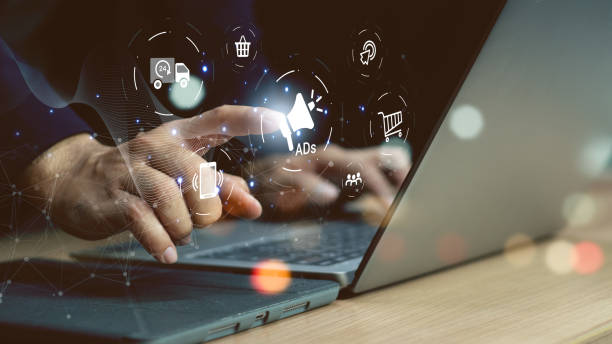
Website loading speed (Page Speed) and improved user experience (User Experience – UX) are critical factors in on-page SEO and the online success of any website.
Search engines, especially Google, rank websites that load quickly and provide a good user experience higher.
This section provides a specialized and practical guide to improving site speed and UX.
Since 2021, Core Web Vitals (including Largest Contentful Paint (LCP), First Input Delay (FID), and Cumulative Layout Shift (CLS)) have been recognized as important ranking factors in Google. These metrics are directly related to loading speed, responsiveness, and visual stability of the site.
To improve loading speed, actions such as image optimization (as mentioned previously), using browser caching, reducing the number of HTTP requests, compressing CSS and JavaScript files, and using a CDN (Content Delivery Network) are very effective.
Additionally, ensuring the site is responsive for mobile devices is crucial, as a significant portion of internet traffic occurs via mobile.
A fast and user-friendly site not only helps improve your on-page SEO ranking but also reduces the bounce rate and increases the conversion rate, as users will have a better experience.
Tools like Google PageSpeed Insights and Lighthouse can help you identify problems and provide solutions.
Research shows that 80% of customers trust companies with professional websites more. Does your current site inspire this trust?
With Rasawweb’s corporate website design services, permanently solve the problem of customer distrust and a weak online image!
✅ Create a professional image and increase customer trust
✅ Attract more sales leads and grow your business
⚡ Get a free consultation
Technical Review and Removal of On-Page SEO Errors
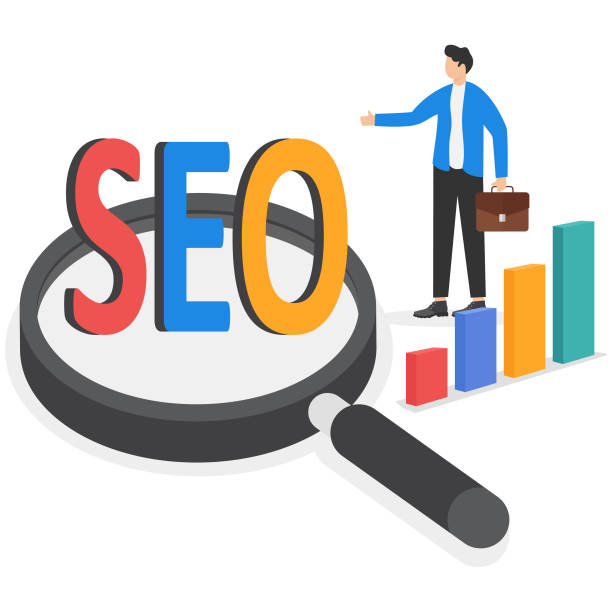
The technical aspects of on-page SEO are often overlooked but are crucial to ensuring that search engines can effectively crawl and index your website.
Technical errors can be a significant obstacle to your site’s ranking.
This section provides an analysis and explanation of how to identify and fix common technical issues.
One of the most important issues is crawl budget issues and crawl errors. Ensure your robots.txt file is correctly configured and doesn’t prevent important pages from being crawled.
Checking for broken links (Broken Links) on the site, both internal and external, is highly important as they disrupt user experience and waste page authority.
Tools like Screaming Frog or Google Search Console can help you identify these links.
Another issue is duplicate content, which can confuse search engines.
Correct use of Canonical tags or 301 Redirects is essential to solve this problem.
Also, checking URL structures (using SEO-friendly and short URLs), optimizing site architecture, and creating an up-to-date XML sitemap are other important technical aspects of on-page SEO.
By fixing these errors, you ensure that search engines can easily find and rank your content.
Monitoring and Analyzing On-Page SEO Performance and Continuous Improvement

On-page SEO is not a one-time process, but a continuous effort.
To achieve sustainable success, regular monitoring and analysis of SEO performance and continuous improvements are essential.
This section provides comprehensive news and analysis on how to measure progress and optimize your strategy.
Tools like Google Analytics and Google Search Console are your two inseparable companions on this journey. Google Analytics allows you to track site traffic, user behavior (such as bounce rate, time on site, pages visited), and traffic sources.
By analyzing this data, you can identify the strengths and weaknesses of your on-page SEO strategy.
For example, if a page has a high bounce rate, it might need improvements in content quality or readability.
Google Search Console provides vital information about your site’s search performance, including keywords users find you with, page rankings, crawl errors, and indexing status.
Furthermore, A/B testing for on-page SEO elements such as titles, meta descriptions, and calls to action can help you find the best combination to increase click-through rates and conversions.
Regularly updating old content, adding new information, and reviewing keywords to ensure alignment with current user search intent are also important actions in continuous on-page SEO optimization.
With an analytical and iterative approach, you can ensure that your on-page SEO strategy remains effective and up-to-date.
Frequently Asked Questions
| Question | Answer |
|---|---|
| What is On-page SEO? | On-page SEO refers to a set of actions taken within a website and on its page content to achieve better rankings in search results. |
| Why is On-page SEO important for a website? | On-page SEO helps search engines better understand your page’s content and assess its importance. It also provides a better user experience for visitors. |
| What are the most important factors in On-page SEO? | The most important factors include keyword optimization, content quality, Title Tag, Meta Description, URL structure, heading tags (H1-H6), internal linking, and image optimization. |
| What role does the Title Tag play in On-page SEO? | The Title Tag is one of the most important on-page SEO factors that displays your page title in search results and browser tabs. It should include the main keyword and be engaging. |
| What is the importance of Meta Description in On-page SEO? | The Meta Description provides a summary of the page’s content, and although it doesn’t directly affect ranking, it can increase the click-through rate (CTR) by encouraging users to click. |
| How are keywords used in On-page SEO? | Keywords are phrases that users employ to search for information in search engines. Proper and natural use of them in content helps the search engine identify the page’s topic. |
| What is internal linking and what is its benefit in On-page SEO? | Internal linking means creating links between different pages of a website. This helps distribute page authority, assists search engine bots in crawling, and improves user experience. |
| How does image optimization affect On-page SEO? | Image optimization involves compressing file size, using appropriate Alt tags, and proper file naming. This improves page loading speed and helps search engines understand the image content. |
| What does quality content mean in On-page SEO? | Quality content means content that is comprehensive, accurate, unique, up-to-date, and user-friendly, and addresses users’ needs. |
| What role does URL structure play in On-page SEO? | Readable, short, and keyword-inclusive URLs help search engines and users better understand page content and improve user experience. |
And other services of Rasawweb Advertising Agency in the field of advertising
Smart Customer Journey Map: A specialized service for increasing sales growth based on precise audience targeting.
Smart SEO: An innovative platform for improving online growth with intelligent data analysis.
Smart Customer Journey Map: Transform digital branding with the help of Google Ads management.
Smart Advertising Campaign: Professional optimization for user engagement using precise audience targeting.
Smart Website Development: A professional solution for online growth focusing on SEO-driven content strategy.
And more than hundreds of other services in the field of internet advertising, advertising consulting, and organizational solutions
Internet Advertising | Advertising Strategy | Advertorials
Resources
- Comprehensive On-Page SEO Guide
- Advanced Internal SEO Articles
- Technical SEO Tips
- SEO Checklist for Your Website
? Rasawweb Afarin Digital Marketing Agency, your reliable partner on the path to online growth!
For more information about our professional services, including WordPress website design, we are ready to take your business to new heights.
📍 Tehran, Mirdamad Street, next to Bank Markazi, Southern Kazeroon Alley, Ramin Alley, No. 6

